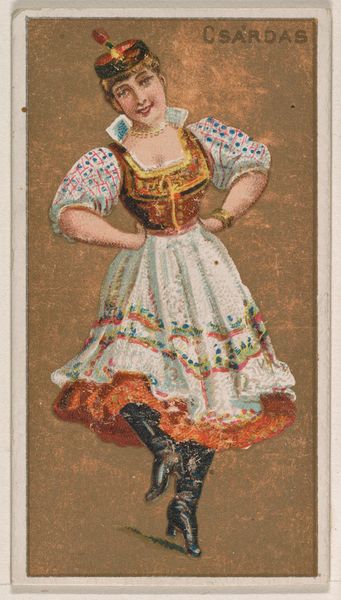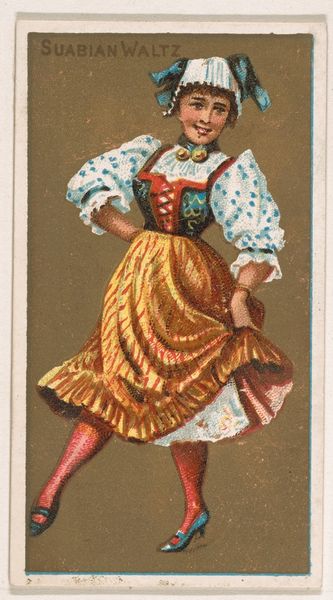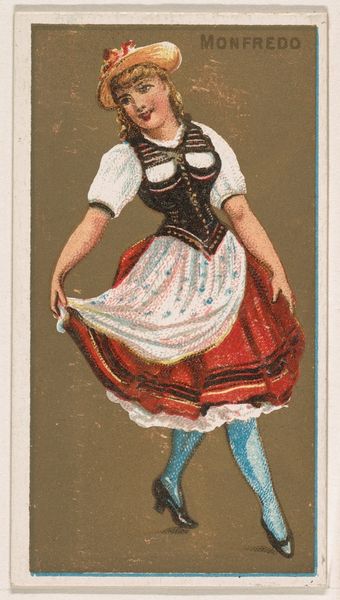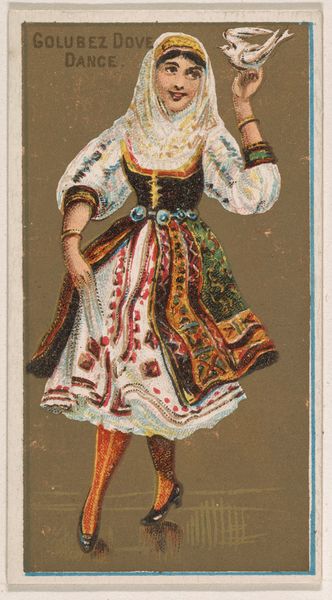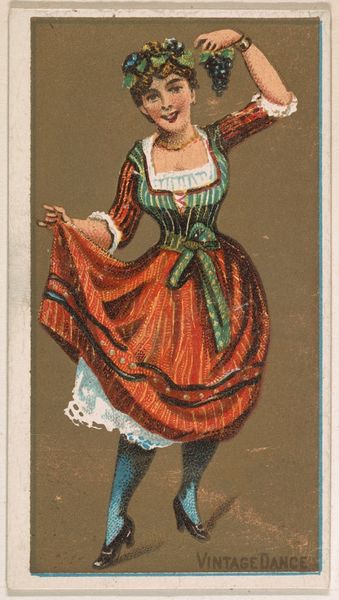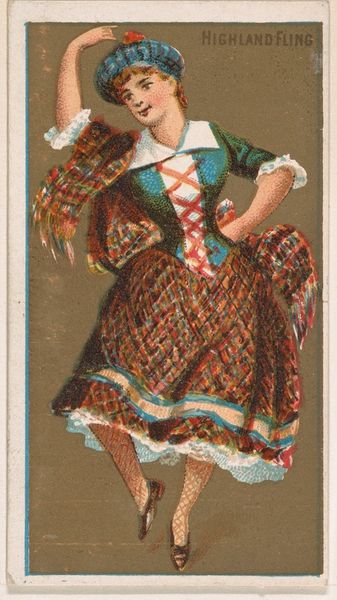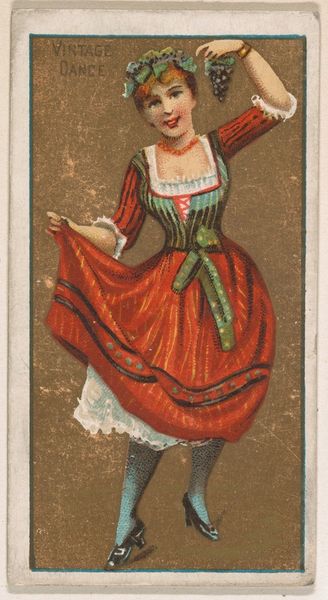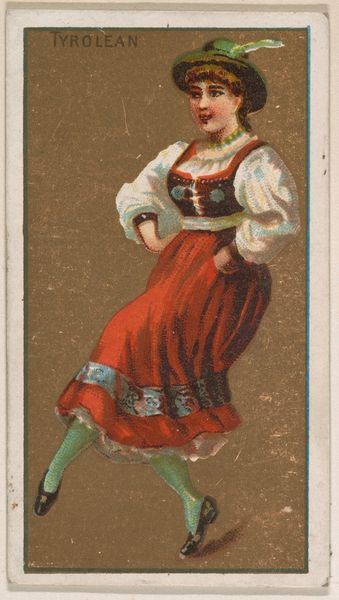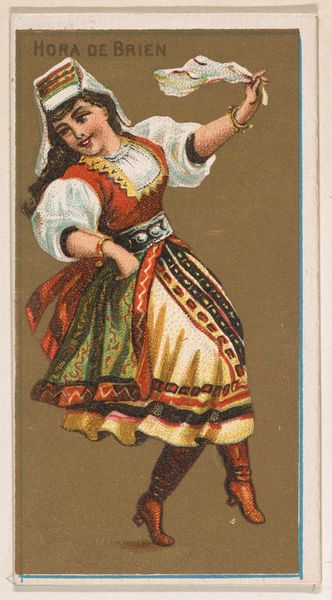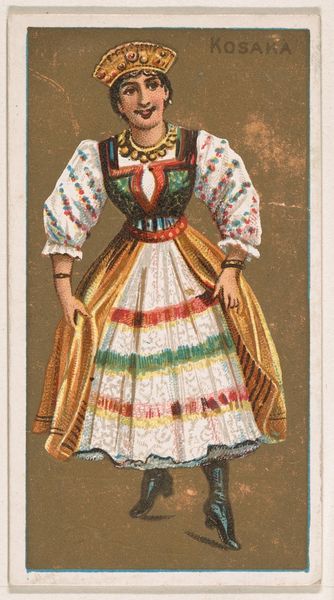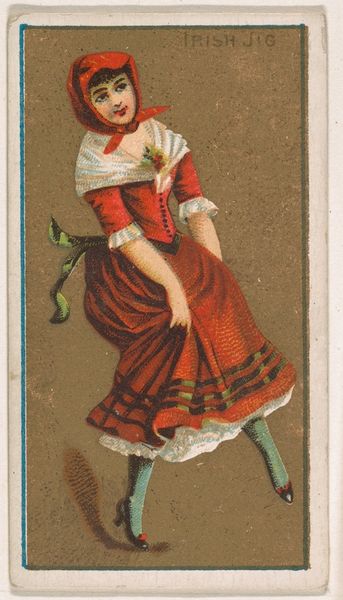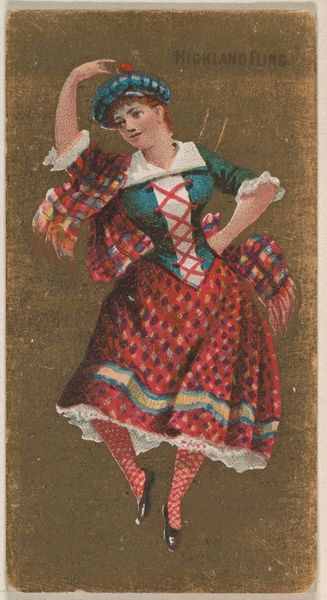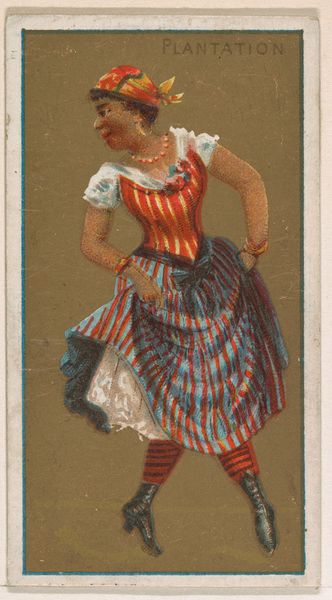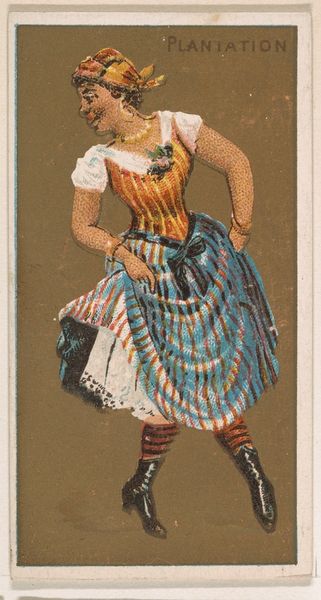
Csardas, from National Dances (N225, Type 1) issued by Kinney Bros. 1889
drawing, print, watercolor
portrait
drawing
water colours
asian-art
figuration
watercolor
coloured pencil
men
watercolour illustration
genre-painting
Dimensions: Sheet: 2 3/4 × 1 1/2 in. (7 × 3.8 cm)
Copyright: Public Domain
This lithograph of "Csardas" was produced by the Kinney Brothers Tobacco Company, likely in the late 19th century, as part of a series on national dances. These cards were originally included in cigarette packs. The image depicts a woman in a traditional Hungarian costume, poised mid-dance, with her hands on her hips and a confident gaze. The csárdás itself is a dance that begins slowly and gradually increases in tempo, reflecting the emotional range of Hungarian folk music. The dance became a symbol of Hungarian national identity, a cultural expression that gained prominence during a period of national awakening and political change in the Austro-Hungarian Empire. What's interesting here is the transformation of folk culture into a commodity. The Kinney Brothers, an American company, appropriated and marketed an exoticized version of Hungarian culture to sell tobacco. As historians, we can research and understand these images better by looking into the advertising strategies of the time. We can investigate the relationship between commerce and cultural representation, and the politics of imagery in the late 19th century.
Comments
No comments
Be the first to comment and join the conversation on the ultimate creative platform.
